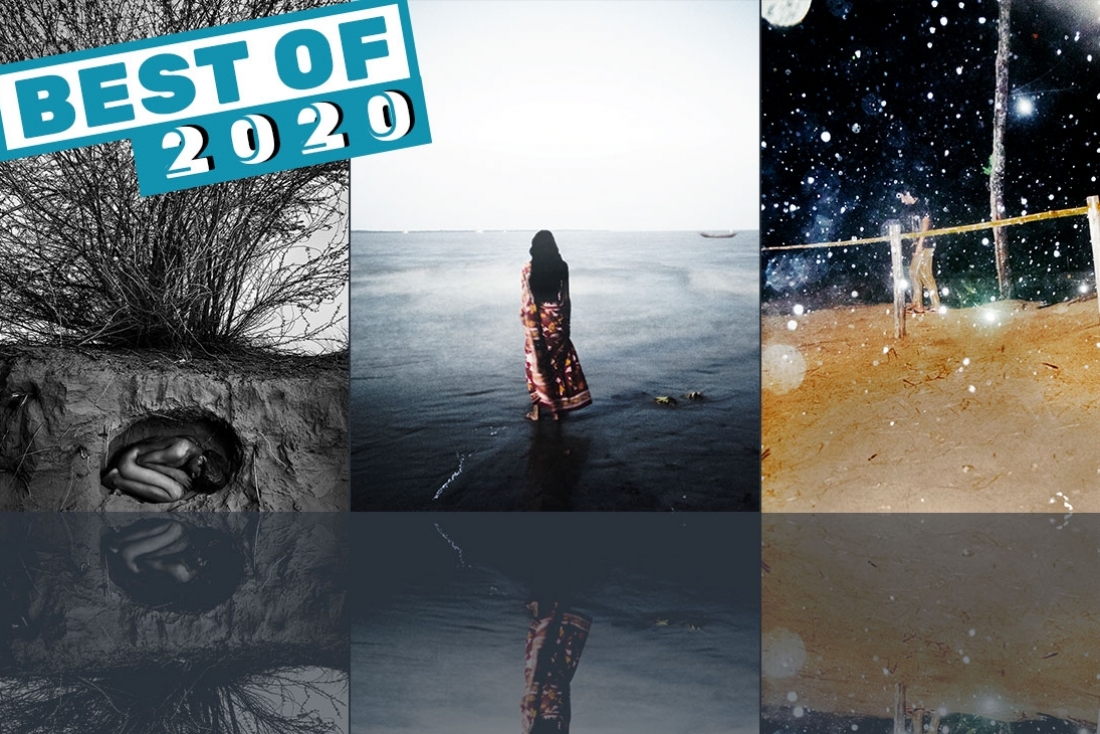

The photographers we have had the privilege of featuring this year, showcase the incredible diversity that exists within the art of photography. From documentary photography, to fine art photography and fashion photography, the talent in every realm is boundless. In case you missed any of them, we present the best of photography we have featured this year.
Soumya Sankar Bose (Documentary Photographer): In my work, I always try to find an incident which was never documented or underreported, and is fading from our memories with time. Both my previous and current works stem from the present — with the Jatra performers reminiscing about their forgotten glory and those in Full Moon on a Darknight imagining the possibility of a time free from societal judgment and tabooing. I always try to create a space where people can express their personal experiences and feelings. Whenever I work, I try to build a relationship with the project and with my collaborators then I move forward with it. This closeness actually inspires me the most and is what my images and my works whisper about. I always try to push myself against boundaries in a different course of action by documenting reality and the psychological impacts of the subject matter.
To read more about the photographer and his work, buy a copy of our new Platform bookazine.
Apeksha Agarwal (Fashion, Beauty and Fine Art Photographer): The Indian city of Mumbai is a chaotic, visually dense world that has been in constant motion since time immemorial. When the global COVID-19 pandemic caused a national lockdown, all that activity stopped abruptly as Mumbai’s human animators retreated to the safety of their homes. A city in which it had been nearly impossible to find views unobstructed or unoccupied by people, whether of buildings, streets, plazas, or other public spaces, was suddenly empty, silent, and left visible as if for the first time. These circumstances gave me a unique opportunity as a photographer, resulting in the creation of Mumbai Lost and Found. They allowed me to depict an urban India without the human element that always defines it in photographs.
Read more about the photographer and her work here.
Sohrab Hura (Photographer and Filmmaker): Spill is an unfolding of a 15-year practice marked by constant probing of the medium of image making. With beginnings rooted strongly in the documentary, Land of a Thousand Struggles (2005-06) and Pati (2010/2020 Iteration) are records that Sohrab Hura made immediately after finishing his university studies when he embarked on a fifty-day long bus journey across the north Indian rural belt with his university professor Jean Dreze and others from civil society who were part of the Right to Food movement. The journey was a final push to demand for the enactment of the National Rural Employment Guarantee Act (NREGA) which eventually became the biggest social security measure undertaken by any government anywhere at the time, with a focus to provide the right to employment with dignity. It was also in this journey that he discovered Pati — a small cluster of village panchayats in Madhya Pradesh (central India) — where Hura would continue to return and work for the next fifteen years thanks to the relationships first forged during the visit on the long road trip.
Read more about the photographer and his work here.
Tarun Chouhan (Documentary Photographer): Photography is the only medium through which I can give a meaningful form to my being. The people that I click become immortal with me in those pictures. My perspective remains to show both humans and nature flowing through the same picture, since the human body is so deeply rooted in nature and that does not let me wander away from it. The constant change our environment goes through, deeply moves me. Something as mundane as sunshine, or even the evening breeze, inspires thought. I listen to ghazals to keep my thoughts pure and calm, and read books. Sometimes I just leave my thoughts with the soul and undertake a long journey, wherein the experience is spiritual rather than corporeal.
Read more about the photographer and his work here.
Pranoy Sarkar (Fashion Photographer and Art Director): The calculation of everything is very interesting to me. I like to first think about how I can put a story together, dream about it, and then I would sketch it. Only after this, do I start thinking about how I’m going to execute it. Then I begin production, looking for location, looking for models, and at times I do collages as well. So, I sketch out anything that is possible or impossible, and then see how to work it out. I've been a process-oriented person that way. And my first instinct when I see the outcome is not to get overwhelmed by it. My first instinct is to constantly find flaws. So days after I've produced something, I’m constantly looking at it, finding as many flaws as I can, and trying to perfect it and fix it to the best of my abilities.
Read more about the photographer and his work here.